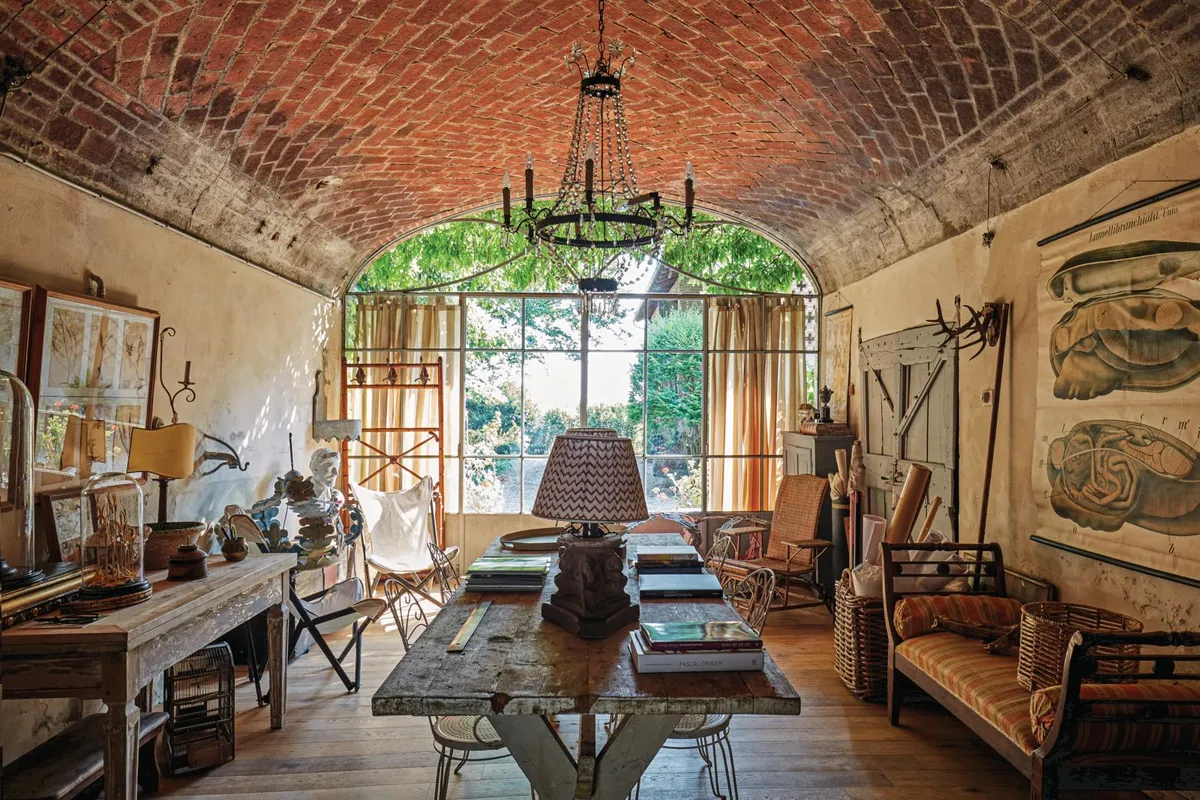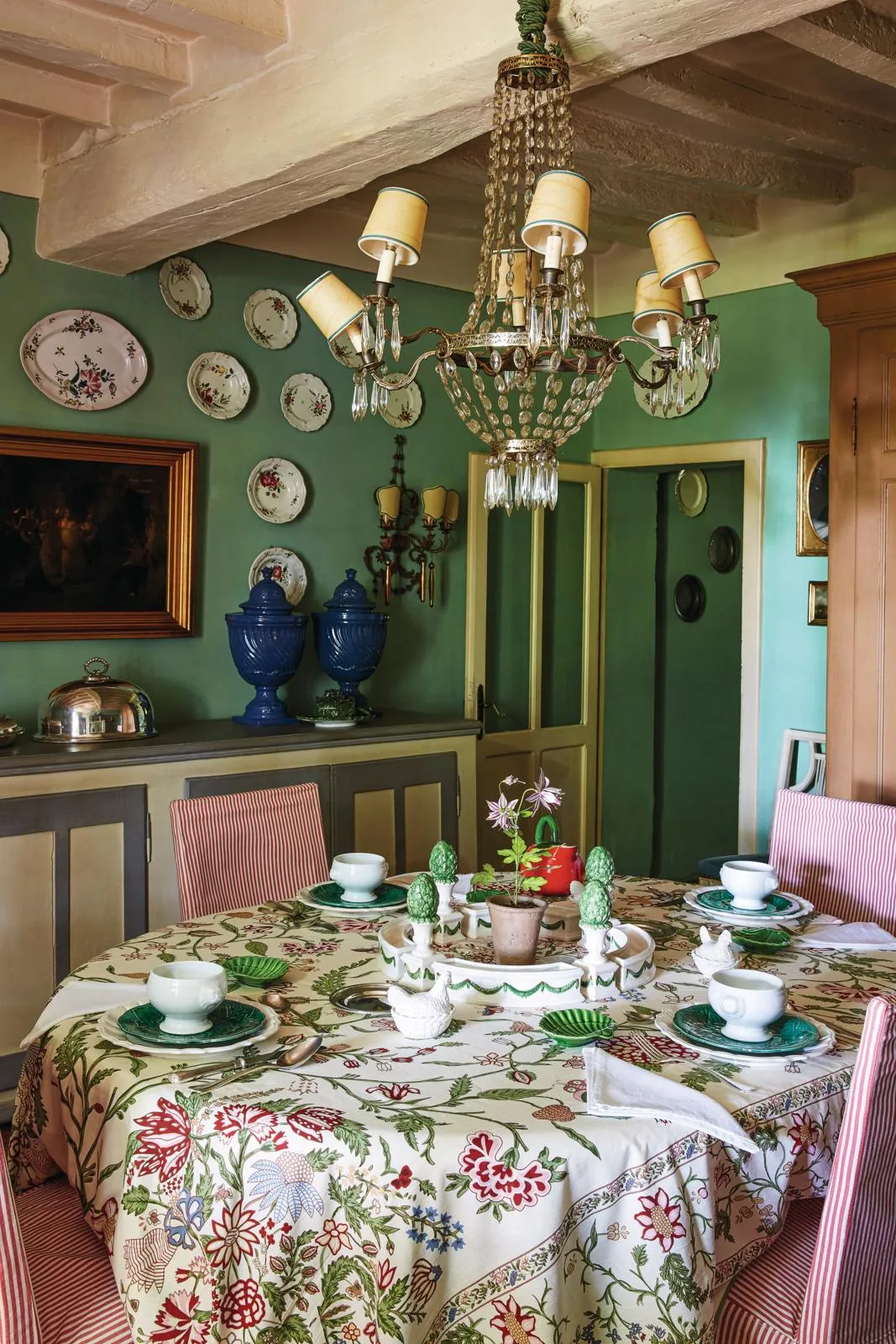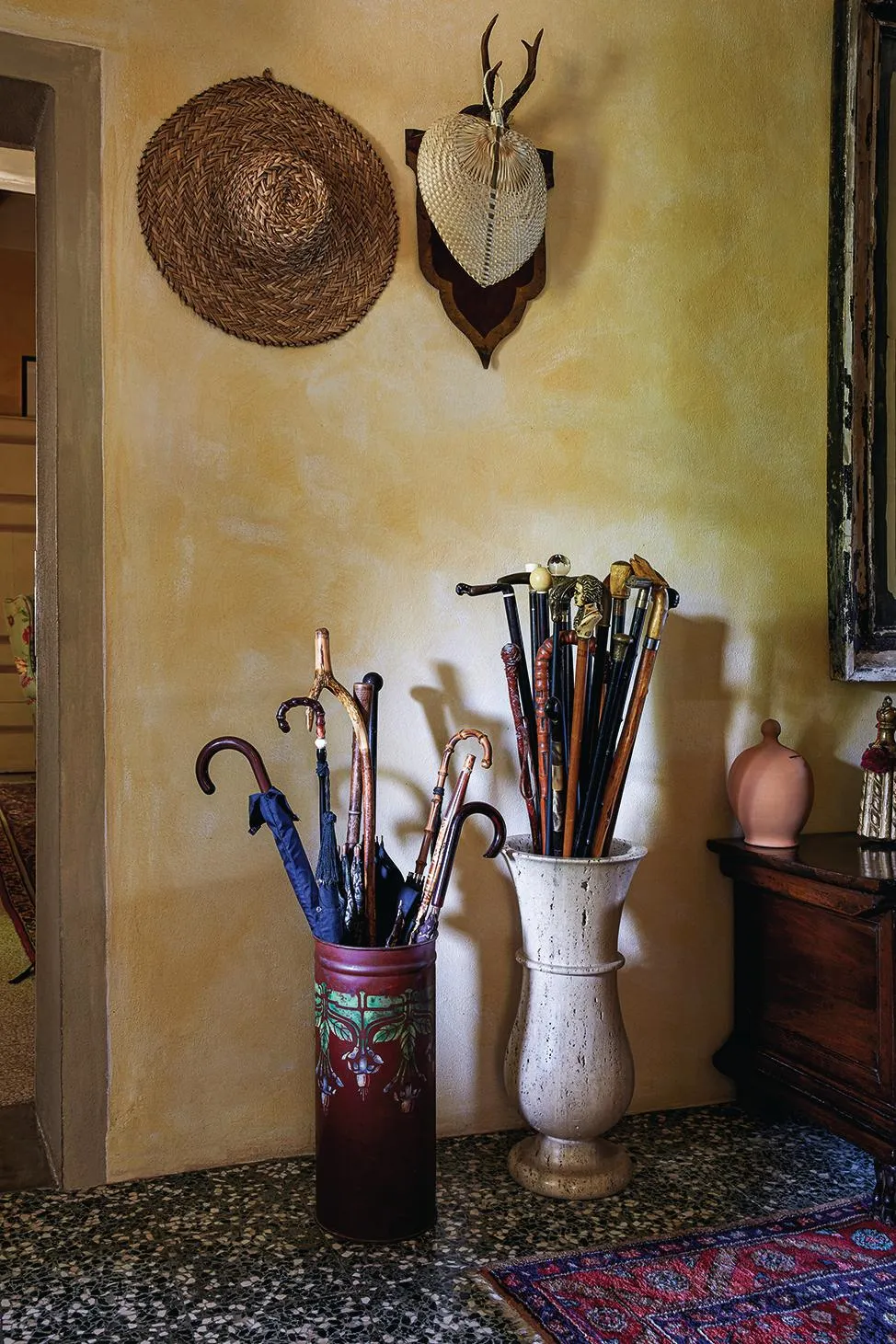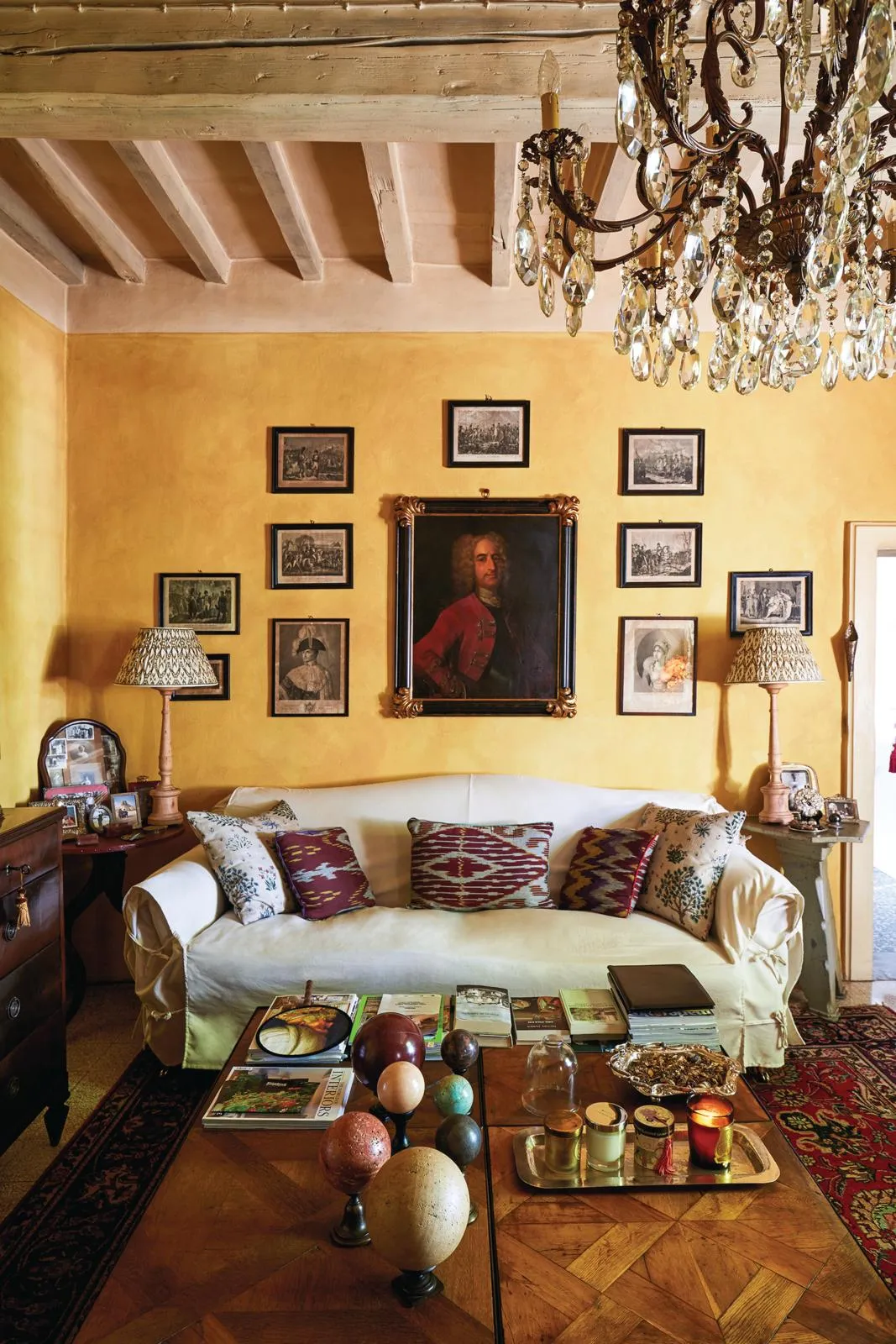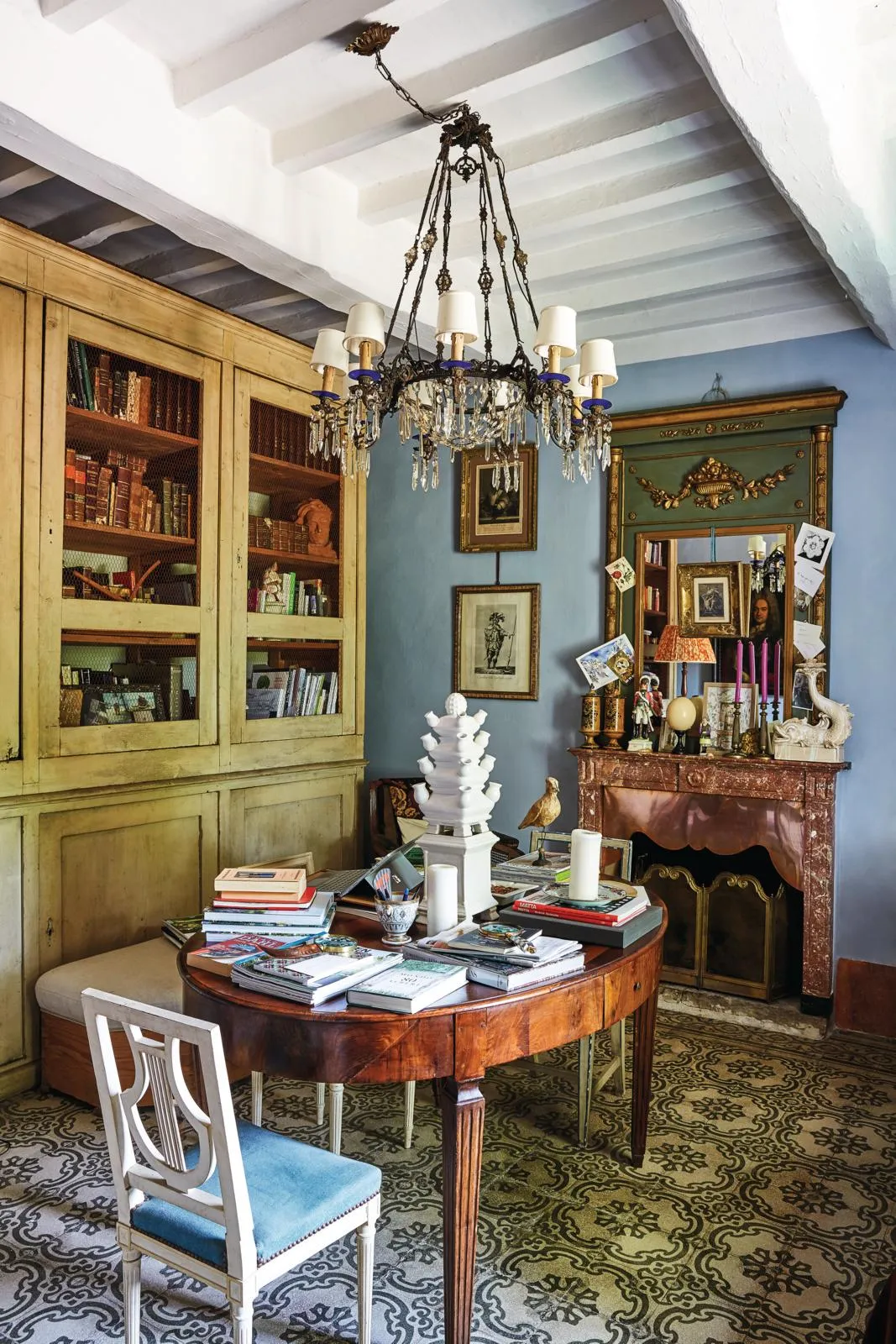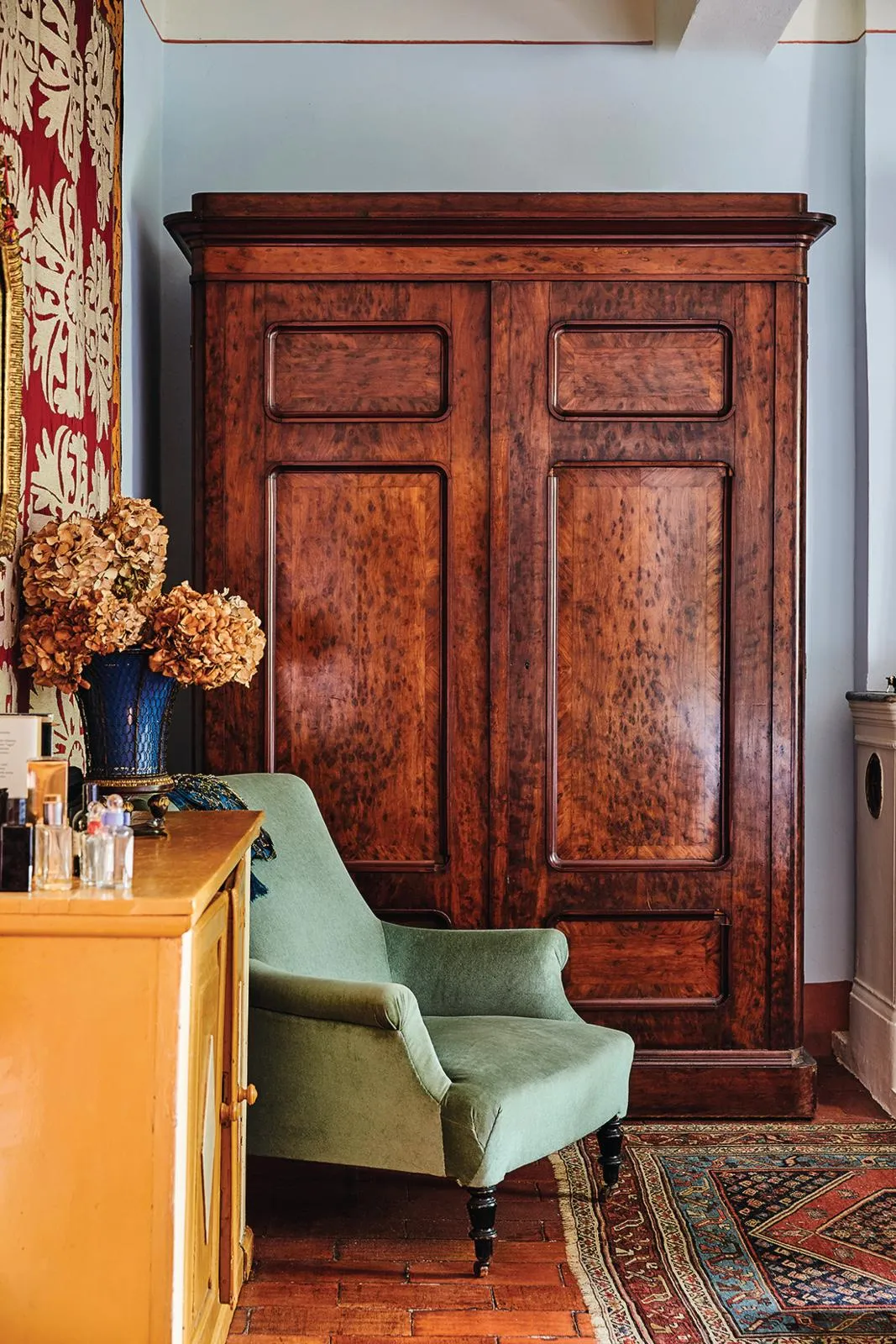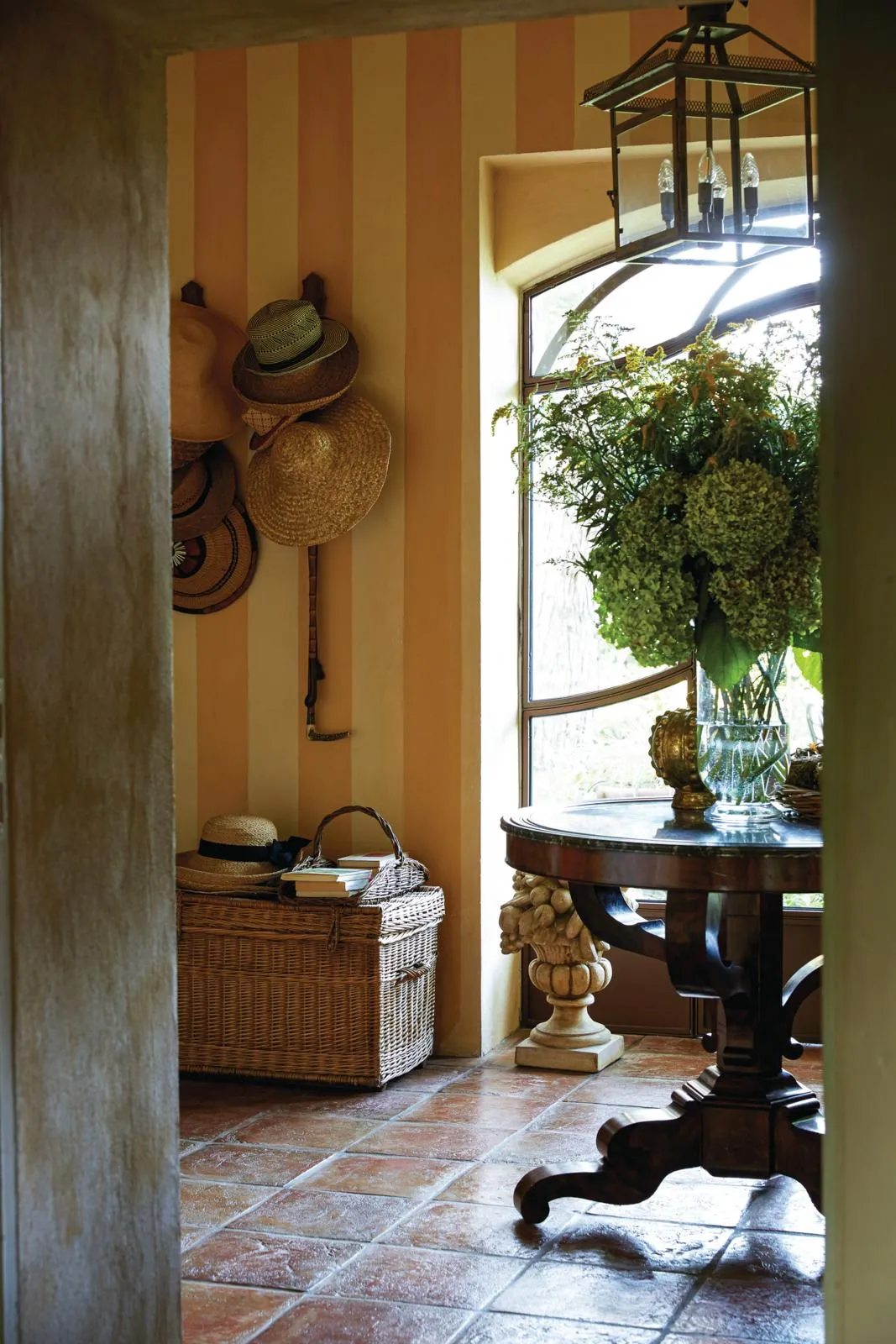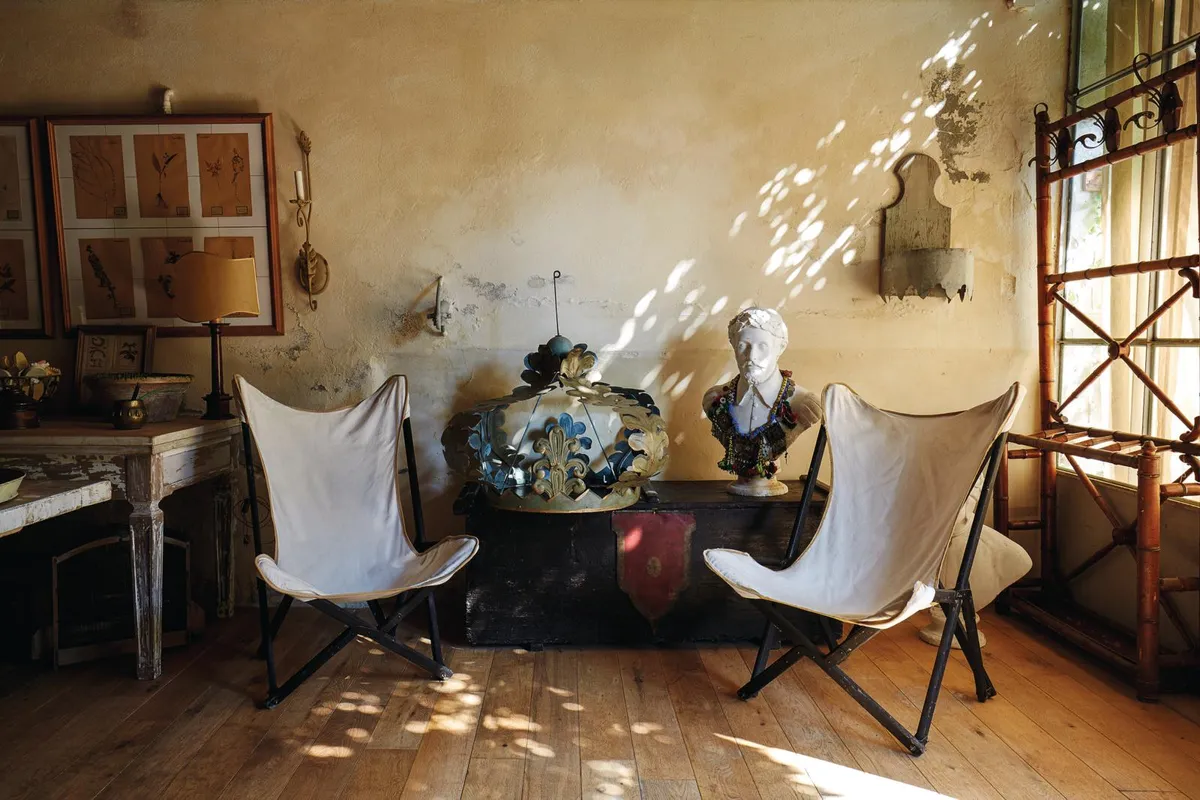'I feel a deep connection with this landscape,’ explains garden designer and antiques dealer Gianmatteo Malchiodi, gesturing to the golden corn fields, punctuated by poplar trees, that surround his 19th-century home in the region of Emilia-Romagna, Italy. The house, which is not far from Parma and Bologna, initially belonged to his mother’s family, and he spent his childhood summers exploring its maze of terrazzo corridors and roaming the extensive gardens. Now it’s where he spends summer and Christmas with his own family and friends.
Italy’s longest river runs through the region – providing water for the old irrigation ditches that feed the crops and grasses covering the rolling hills that can be seen from the house. ‘The area has the most awful climate in the world, I suppose,’ he laughs. ‘It’s very hot in summer, and wet and cold in the winter – but it looks like it has been conceived by a designer.’ Perhaps this is why film director Luca Guadagnino chose the area as the location for his film adaptation of André Aciman’s coming-of-age novel, Call Me by Your Name, rather than the coastal backdrop that features in the book.
The sprawling house and grounds span at least two centuries. Though the main structure was built in the early 19th century, other areas of the house date from far earlier – such as the kitchen and entrance hall. ‘It’s a very simple three-storey building,’ explains Gianmatteo. A central yellow hallway with striking terrazzo flooring runs through the ground floor, with airy day rooms, the traditional farmhouse-style kitchen and the bright summer dining room, with views out towards the garden on either side.
You might also like an 18th-century Italian castle
On the upper two floors there are several bedrooms, including the master bedroom, each with beautiful beamed ceilings and traditional terracotta floors. ‘This kind of layout is typical of the area,’ Gianmatteo says. ‘Perpendicular to the house there are also two outbuildings, and the whole complex is in the shape of a U,’ he explains.
When Gianmatteo moved into the house, he was lucky that there were very few structural issues, and it merely required routine maintenance. It was also furnished with an exquisite array of antique furniture and objects that his family had acquired over the years. ‘I tried to make everything feel a bit fresher and brighter by introducing lively colours on the walls and some new fabrics,’ he says, referencing the daffodil-yellow walls in the sitting room and hallway, plus the newly upholstered dining room chairs, which look smart in ticking stripes.
‘I used natural colours such as calce (a vibrant green) and terre (an earthy yellow),’ he says. ‘The palette was inspired by the traditional colours used in this area during the 19th century, but I chose shades that were brighter and stronger as it can be so gloomy here in the winter. Yellow and green are also my favourite colours.’
Antiques are natural bedfellows for a house of this age and scale, and Gianmatteo grew up surrounded by magnificent examples. ‘I was born among antiques, and I like the sense of uniqueness that an old piece has,’ he muses. ‘Antiques become more beautiful when you use them – a scratch or a sign of age is never a fault but a plus. And you can always repair antiques instead of replacing them.’
You might also like an elegant renovation of an Italian villa
Several of the pieces in the house came from another, even grander home owned by Gianmatteo’s family. As it was a far larger house some of the furniture had to be reduced in size to work with his current dwelling – ‘the bookcase in the library was once an enormous cupboard for bed linen,’ he says. Not that it looks in any way diminished by the alteration.
Though he wouldn’t describe himself as a collector – ‘I get bored too quickly!’ he laughs – Gianmatteo is drawn, in particular, to painted antiques from the end of the 19th century. He also has a passion for elegant neoclassical Louis XVI pieces from France. The house is filled with displays of his finds, from the collection of antique marble spheres in the living room, to the forest of walking sticks in the entrance hall. ‘I used to visit antiques fairs, such as Mercanteinfiera in Parma, and the markets in Avignon and Montpellier, but I try to avoid buying too many things now because of the lack of space,’ he sighs.
Although Gianmatteo has transformed the historic house into a luxurious summer haven throughout his time living here, it is the garden that is his one true love. With its combination of courtyards, expansive lawns and wide, flower-filled borders, it is not dissimilar to the romantic grounds in Luca Guadagnino’s 2017 film. ‘The garden has been my testing ground for my experiments with plants over the years,’ he reveals. ‘Now it’s composed of four ‘rooms’: an evergreen one in the main courtyard, one made from a structure of yew and osmanthus, another in the shade with a collection of hydrangeas, and a potager with beds of roses.’ Unlike the house, it seems the garden is always changing and Gianmatteo has yet to run out of space.
